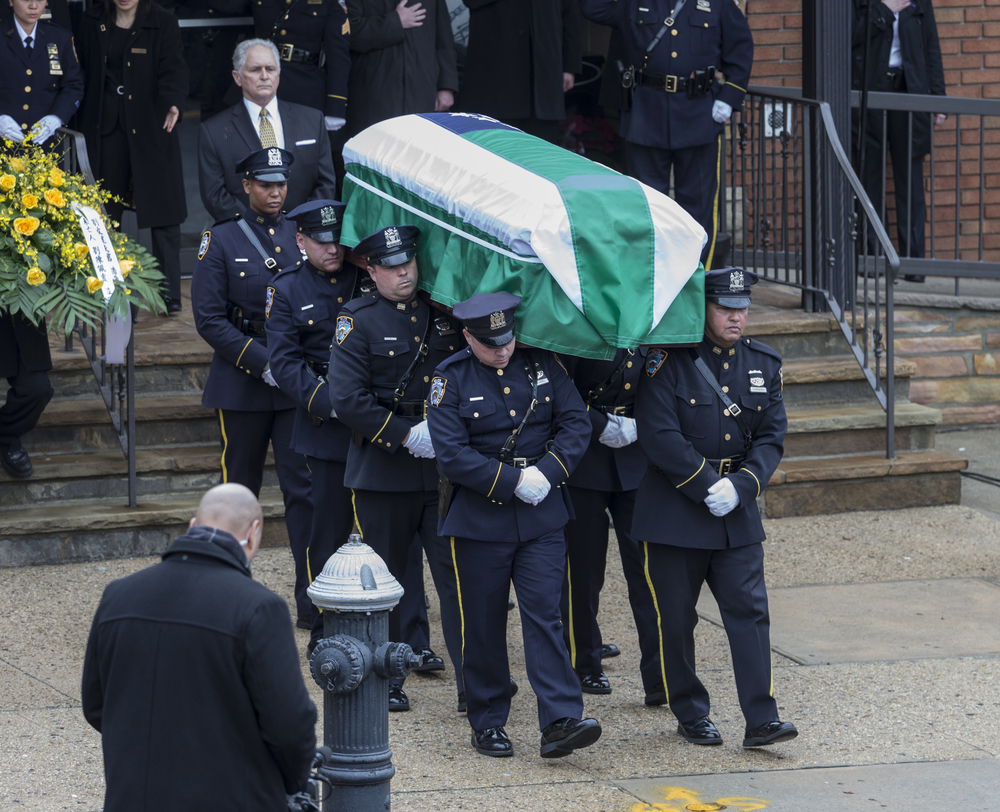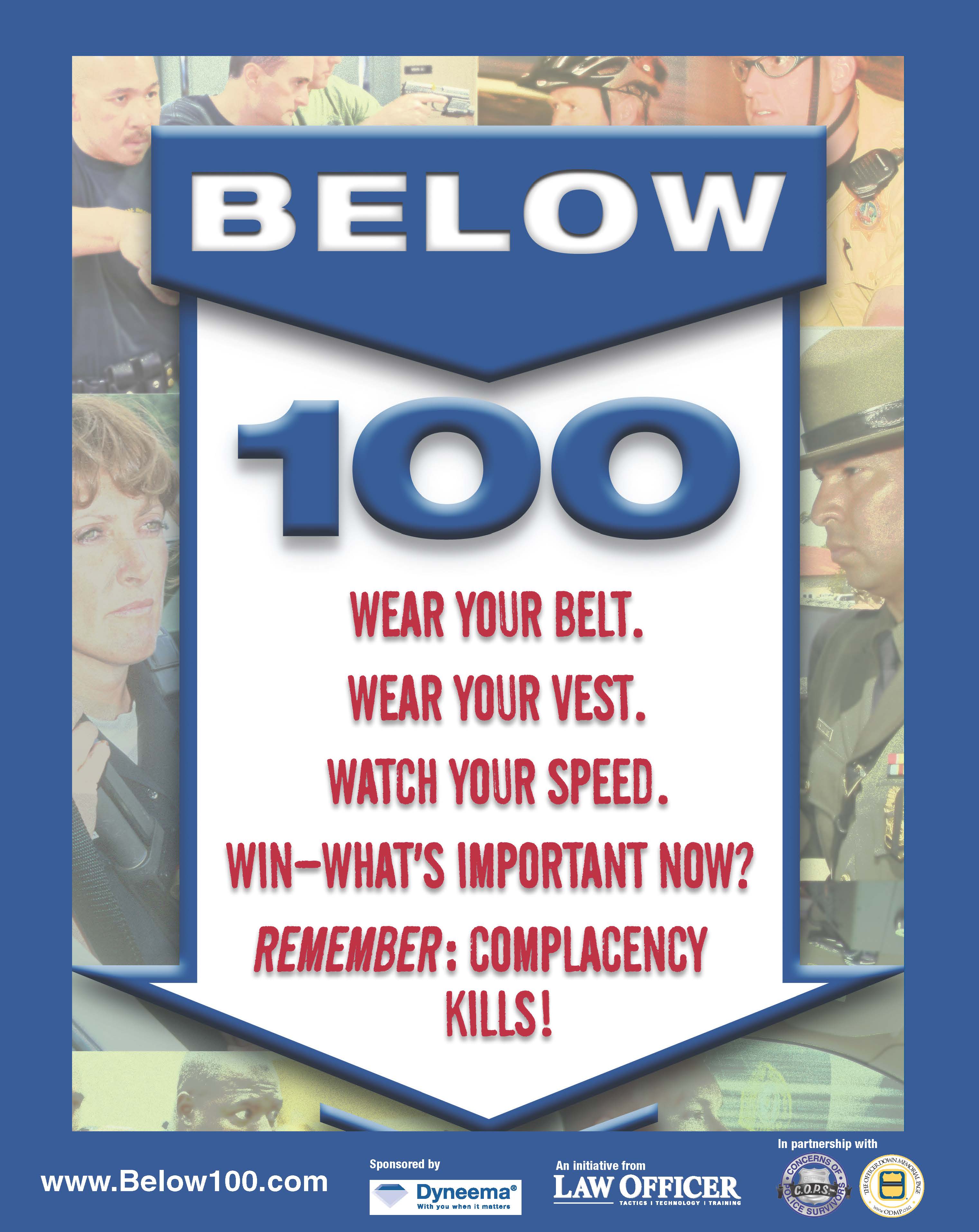Last month we discussed the number 100 and the significance this number holds for both police and fire services. The number represents a benchmark for annual firefighter and law enforcement officer line of duty deaths (LODDs).

In 2016, 141 police officers lost their lives in duty-related incidents (Officer Down Memorial Page). Many of these deaths occurred when officers were involved in vehicle accidents or were struck by vehicles. This is similar to the fire service, where roughly 25% of LODDs occur from transportation incidents. Tragically, however, 63 of these officer deaths occurred from gunfire. 2016 proved to be a year where police officers were targeted numerous times simply for being officers. Firefighters typically do not face this type of violent assault.
As in the fire service, there are some officer LODDs that cannot be anticipated and therefore little we can do to prevent them. But that should not mean that we lose focus on those that are preventable.
That’s where the Below 100 initiative comes in. My son works in a joint police and fire facility (I know, cats and dogs living together!). One day, while driving out of his fire station through the automatic exit gate, I saw a sign stating the following:
Wear Your Belt
Wear Your Vest
Watch Your Speed
WIN—What’s Important Now?
Remember: Complacency Kills!
I went home and researched the origin of these phrases and found the Below 100 initiative.
About Below 100
The Below 100 program started with a conversation among some officers at a law enforcement training conference. According to the Below 100 website, Major Travis Yates of the Tulsa Police Department said, “If we would just slow down, wear our seatbelts and clear intersections, we could get our line-of-duty deaths to below 100 a year.” In many ways this was a radical notion—at the time, it had been more than 65 years since police line of duty deaths were so low. But it was also very simple: Many officer deaths can be prevented if we focus on the root causes and apply straightforward, easy-to-remember safety procedures.

What did surprise me, however, is how the Below 100 message applies to both law enforcement and firefighting. There are obvious things within our control—wearing seat belts, using proper personal protective equipment (PPE), and driving with safety in mind—that we can do each shift to increase our chances for going home.
With that in mind, I hope my law enforcement friends will indulge me in offering a firefighter’s perspective on the Below 100 tenets and police line of duty deaths.
Wear Your Vest
Many deaths in law enforcement and the fire service can be prevented if we take our own safety seriously. Police officers wearing their bullet-resistive vest should be a “no brainer.” Not wearing this PPE would be the equivalent of a firefighter entering a burning building not wearing a self-contained breathing apparatus (SCBA). Yes, this did happen in the “old days,” but it should NEVER happen in today’s environment.
I know that your vests are bulky and hot. How do I know? I wore one too. Now, don’t misunderstand me; I didn’t have to wear one every day. As a member of our arson team, I was a sworn peace officer and carried weapons. We wore our vests when we performed those duties (Firefighters with guns? Scary, I know!). Whether I was on the range or doing “fire cop” stuff, I would feel naked without that vest. I encourage you to always wear that minimum protection.
Wear Your Belt and Watch Your Speed
The driving you do is exciting, and risky. Officers drive on all types of roadways and in all types of weather. Add the risk of chasing “bad guys” and adrenalin, and the act of driving becomes even riskier. Three tenets of Below 100—wear your belt, watch your speed and what’s important now—all come in to play when you are driving.
Wearing your seatbelt is the “no brainer.” I don’t care what excuse you come up with; statistics prove that wearing your belt is safer than not wearing it. Speed is also a factor. Even the greatest drivers in the world are not exempt from losing control from time to time; just look at the names of race car drivers (pretty good drivers to say the least) who “made it” onto that profession’s “wall of fame” and who never made it home from the track. They, as well as you, are not exempt from the laws of physics.
WIN? and Remember: Complacency Kills!
When you are pursuing the “bad guy” I know how bad you want to catch them; at the time, it seems like the only thing that’s important. That’s where WIN comes in: What’s important now? Should this pursuit continue? Is it important enough for me to risk not going home? Can I slow down a bit, clear the intersections, and keep my vehicle under control? Driving is one of the biggest hazards you face, but it’s one thing you can control.
WIN also comes in to play every moment you are on duty. What’s important now applies to so many things you do. As a supervisor in the fire department I tried very hard to battle complacency in myself and others. It was easy to just brush off simple tasks, such as checking my SCBA; it would be there when I needed it, right? The same thing goes for a police officer’s equipment. Do you check your patrol car before your shift? Religiously? Every shift? Do you make sure the tires look good, are properly inflated? What is the most important piece of equipment on your car during a pursuit? The engine? The lights and siren? Or is it your tires?
These tenets also apply to your mental state. What’s going through your mind? Are you distracted by financial issues? Your marriage? Maybe your kids and their struggles? Being focused on the job is a vital part of your personal safety. Law enforcement is inherently stressful. Pile on the personal stuff we all face, and the stress can get downright dangerous if we don’t have methods for coping.
No matter what’s going on in your personal life, when you’re on duty, you must focus on the tasks at hand. You must be “in the moment” and keep your head on a swivel. One of my co-workers always used to say, “Keep your head in the game.” That was his way of expressing both WIN and Complacency Kills. These are good words to live by for officers and firefighters alike.
No Unnecessary Sacrifices
Firefighters and police officers face risks every day when they show up to work; we take on these risks knowingly and willfully. It’s good to remind ourselves, from time to time, why we signed up for our jobs. We did it for two reasons: One, somehow we all felt called, to one degree or another, to become a part of these noble professions. Two, we know that we wouldn’t truly be happier doing anything else.
But keep in mind, none of us are called to sacrifice ourselves unnecessarily. We assume these risks with our eyes wide open, but we also deserve to go home at the end of watch. We have the power to control some circumstances, but not all. Let’s do the things, consistently, that are in our control.
Remember:
Wear Your Belt
Wear Your Vest
Watch Your Speed
WIN—What’s Important Now?
Complacency Kills!
